Based on 746 reviews
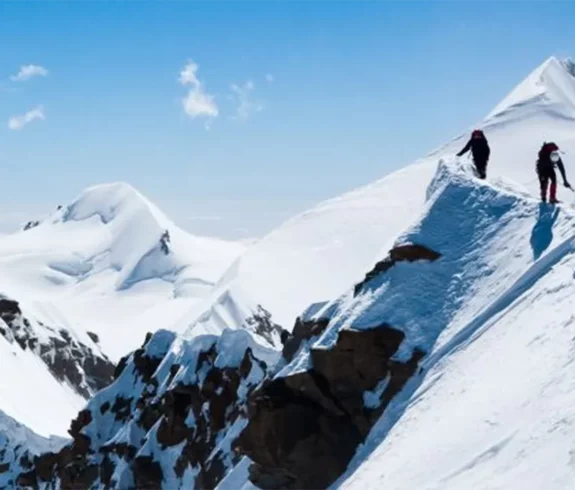
Singu Chuli Peak Climbing
Scaling the Majestic Singu Chuli Peak
Duration
Meals
- 22 Breakfast
- 19 Lunch
- 20 Dinner
Accommodation
- 5-nights hotel
- 17-night eco-lodge and tent
Activities
- Peak Climbing
- Trekking
- Sightseeing
SAVE
€ 910Price Starts From
€ 4550
Overview of Singu Chuli Peak Climbing
Climbers starting on the ascent of Singu Chuli Peak, also known as Fluted Peak, which stands at an impressive altitude of 6,501 meters within the Annapurna Sanctuary, begin on a remarkable adventure captivated by stunning landscapes and challenging routes. Singu Chuli Peak Climbing draws adventurers to its varied terrain, rich traditions, and breathtaking views. Climbers journey through the charming villages of Ghandruk, Chomrong, and Ghorepani, enjoying the warm hospitality of the Gurung communities.
The trek to the base camp, navigating the Modi Khola gorge, offers a glimpse into the challenging yet visually stunning ascent that awaits. The summit attempt on Singu Chuli proves both challenging and rewarding, demanding proficiency in rock and ice climbing.
Trip Highlights
- Summit Achievement: Conquer the distinct ‘Fishtail Pyramid’ of Singu Chuli for unparalleled vistas of the Himalayas.
- Annapurna Adventure: Traverse diverse terrains in the Annapurna region, from lush valleys to high-altitude deserts.
- Cultural Encounters: Dive into the rich Gurung culture in local villages, soaking in their traditions and hospitality.
- Climbing Challenges: Face steep snow slopes and technical ridges for an adrenaline-pumping mountaineering adventure.
- Nature’s Bounty: Spot unique Himalayan wildlife and flora throughout the journey.
- Base Camp Trek: Savor the scenic landscapes and seize acclimatization opportunities en route to base camp.
- Mountain Panoramas: Feast your eyes on the breathtaking views of Annapurna, Machhapuchhre, and other towering peaks.
Departing from the Annapurna base camp, climbers confront the mountain’s imposing nature, highlighting the necessity for meticulous preparation, acclimatization, and strategic placement of camps. This climb suits adventure seekers with mountain climbing experience, ready to face the peak’s steep ascents and jagged ridges.
The Singu Chuli Peak Climbing journey strikes a balance between the perils of high-altitude mountaineering and the thrill of the experience. The route meanders through lush meadows, thick forests, and clear streams, revealing a rich contrast of landscapes. Climbers, reaching more secluded areas, marvel at the surrounding majestic peaks, feeling an overwhelming sense of wonder.
This challenging journey tests their physical strength and mental toughness, fostering a deeper connection with the Himalayan wilderness and culture. Conquering Singu Chuli Peak stands as a monumental adventure, rewarding climbers with a profound sense of achievement and lasting memories.
History and Significance of Climbing Singu Chuli Peak
Singu Chuli Peak, also known as Fluted Peak, started attracting climbers in the 1950s and 1960s during the early explorations of the Annapurna region. Wilfrid Noyce and David Cox made the first successful climb of this peak in 1957, using the southeast face. Their achievement marked Singu Chuli as a favorite spot for those seeking technical and challenging climbs.
Ever since that first ascent, climbers from all over the world have flocked to Singu Chuli. Located in the Annapurna Sanctuary, it offers not only a tough climb but also stunning views and a chance to experience the local natural and cultural wonders. Climbers taking on its steep slopes and technical ridges follow in the footsteps of many mountaineers before them, making Singu Chuli Peak climbing a respected and admired mountaineering adventure.
Detail Itinerary of Singu Chuli Peak Climbing
Day 1: Arrival in Kathmandu (1,400m)
When climbers arrive in Kathmandu, Nepal’s capital, they find themselves in a lively and culturally rich city. Kathmandu, known for its history, is the starting point for many climbs in the Himalayas, including the Singu Chuli Peak expedition.
Climbers see old temples, bustling markets, and colorful streets in Kathmandu. During this period, climbers get ready for their expedition. They have a meeting where they meet their guides, talk about the trip plan, and go over safety rules. They also check and prepare their climbing equipment and supplies.
Accommodation: The Everest Hotel
Meals: Not Included
Day 2: Kathmandu Sightseeing and Preparation
Kathmandu, a city rich in cultural heritage, invites explorers to immerse themselves in its historical and spiritual landmarks before starting their mountainous quest.
Visitors often explore key sites like the Pashupatinath Hindu temple, the Swayambhunath Buddhist stupa (widely known as the Monkey Temple), and the historic Durbar Square, which all highlight the city’s deep historical roots and religious diversity.
Preparing for the expedition becomes a critical task, with climbers checking equipment, organizing travel to the trek’s starting point, and engaging in comprehensive briefings with their guides.
Accommodation: The Everest Hotel
Meals: Breakfast
Day 3: Fly or drive from Katmandu to Pokhara and transfer to the hotel.
Moving from Kathmandu’s rich culture to Pokhara’s breathtaking landscapes marks a crucial phase in the Singu Chuli Peak Climbing journey.
Climbers have the choice of a picturesque 7-8 hour bus ride or a quick 30-minute STOL flight to reach Pokhara, the doorstep to the Himalayas.
Upon reaching Pokhara, known for its tranquil lake and sweeping views of the Annapurna range, the team transfers climbers to their hotel for rest and mental preparation.
Accommodation: Hotel
Meals: Breakfast, Lunch, Dinner
Day 4: Drive to Nayapul (1,070m) and Trek to Tikhedhunga (1,540m) - 4-5 Hours Trek
The journey from Pokhara to Nayapul marks the transition from travel to trekking. This drive is relatively short and takes climbers through more of Nepal’s picturesque landscapes.
Upon reaching Nayapul, the actual trek begins. Climbers enter the realm of foot trails here, escaping the bustle of the city and entering an area of breathtaking natural beauty.
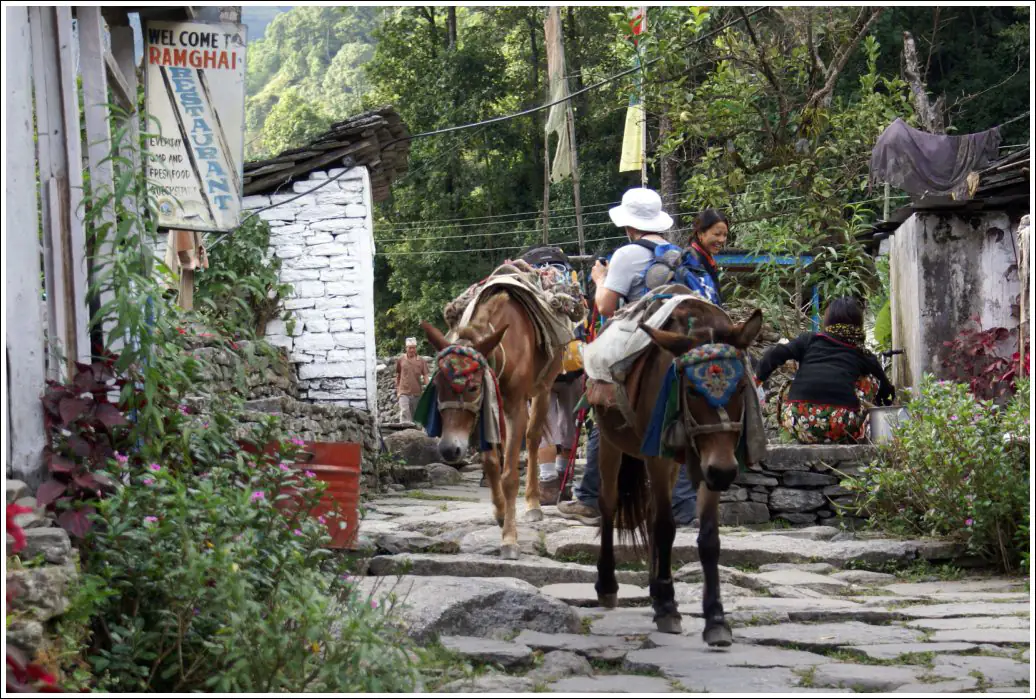
The first trekking destination is Tikhedhunga, a charming village serving as a popular trekking stop. The path to Tikhedhunga is a gentle introduction to the trekking experience, featuring scenic views and a glimpse into rural Nepalese life.
The overnight stay in Tikhedhunga allows climbers to rest and prepare for the more challenging parts of the trek.
Accommodation: Local Lodge
Meals: Breakfast, Lunch, Dinner
Day 5: Tikhedhunga to Ghorepani (2,860m) - 6-7 Hours Trek
The trek from Tikhedhunga to Ghorepani takes climbers through stunning rhododendron forests, incredibly vibrant during the blooming season.
The journey to Ghorepani is not just a walk; it is an immersion into the lush, natural beauty of the Nepalese wilderness, making every step a memorable experience.
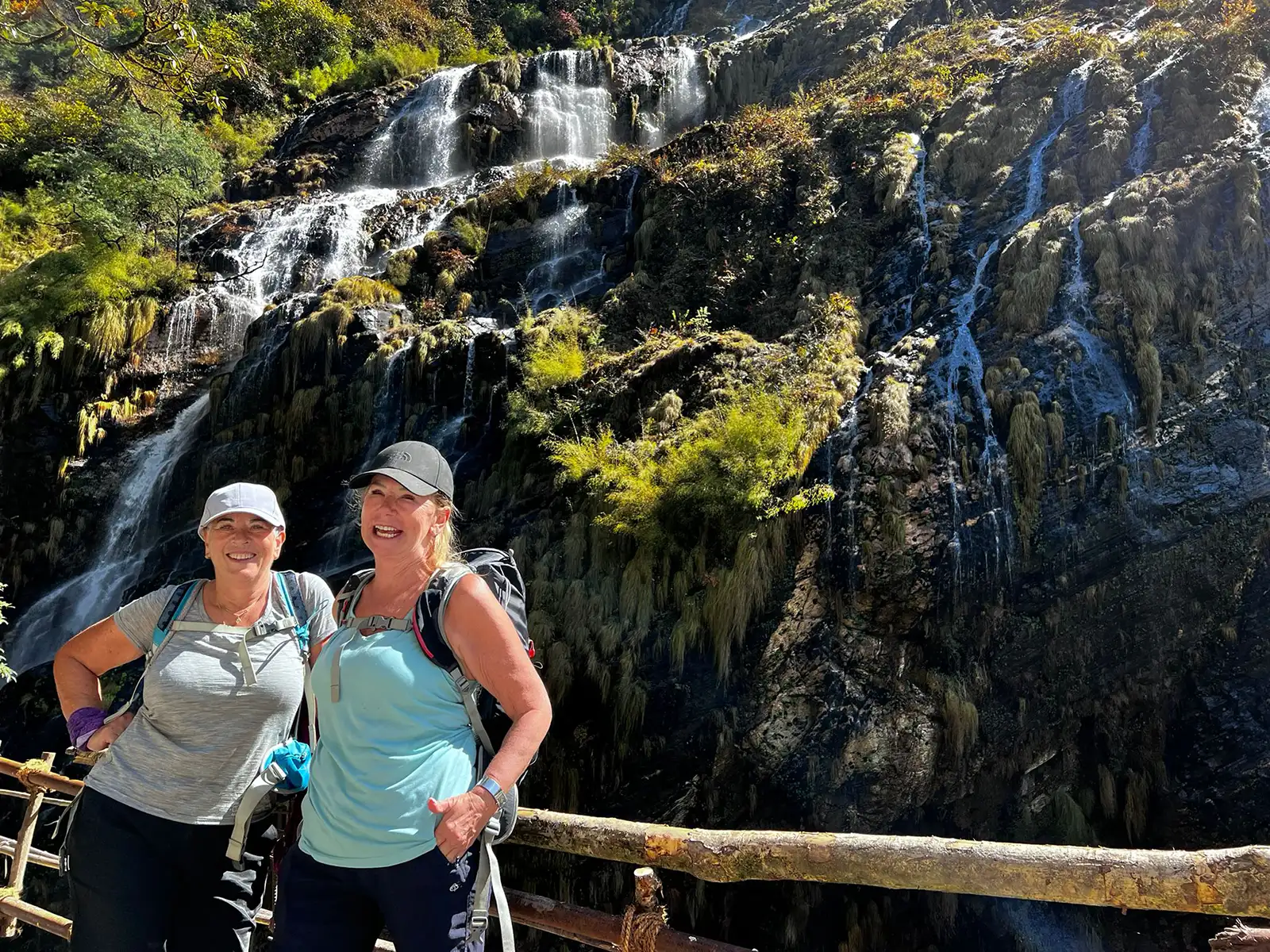
Upon reaching Ghorepani, trekkers find themselves in a welcoming village known for its spectacular mountain views.
You can unwind and enjoy the tranquil surroundings by spending the night in Ghorepani. The village serves as an ideal stopover, providing a peaceful evening under the stars and a restful night.
Accommodation: Local Lodge
Meals: Breakfast, Lunch, Dinner
Day 6: Ghorepani to Poon Hill (3,210m) to Tadapani (2,630m) - 6-7 Hours Trek
Hiking up to Poon Hill early in the morning is a particular part of the trek. It allows trekkers to see a stunning sunrise over the Himalayas. From Poon Hill, they get a comprehensive view of mountains like Annapurna and Dhaulagiri, lit up by the morning sun.
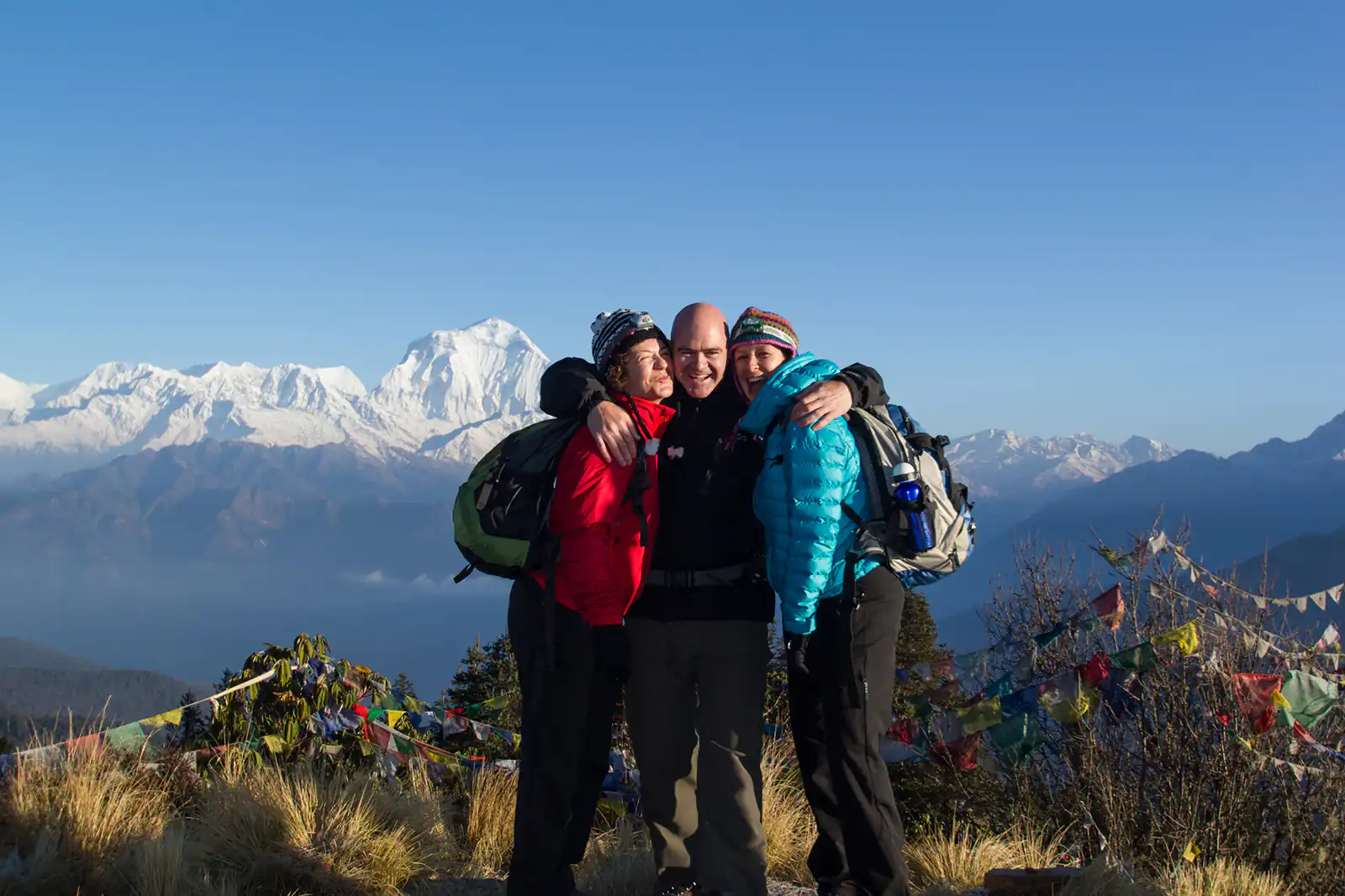
The trek then moves on to Tadapani after leaving Poon Hill. When trekkers reach Tadapani, a quiet village in the mountains, they can relax and spend the night there.
Accommodation: Local Lodge
Meals: Breakfast, Lunch, Dinner
Day 7: Tadapani to Chhomrong (2,170m) - 5-6 Hours Trek
The trek from Tadapani to Chhomrong is a journey through the heart of the Annapurna region, leading to one of its most picturesque Gurung villages. As trekkers make their way, they experience natural beauty and cultural richness.
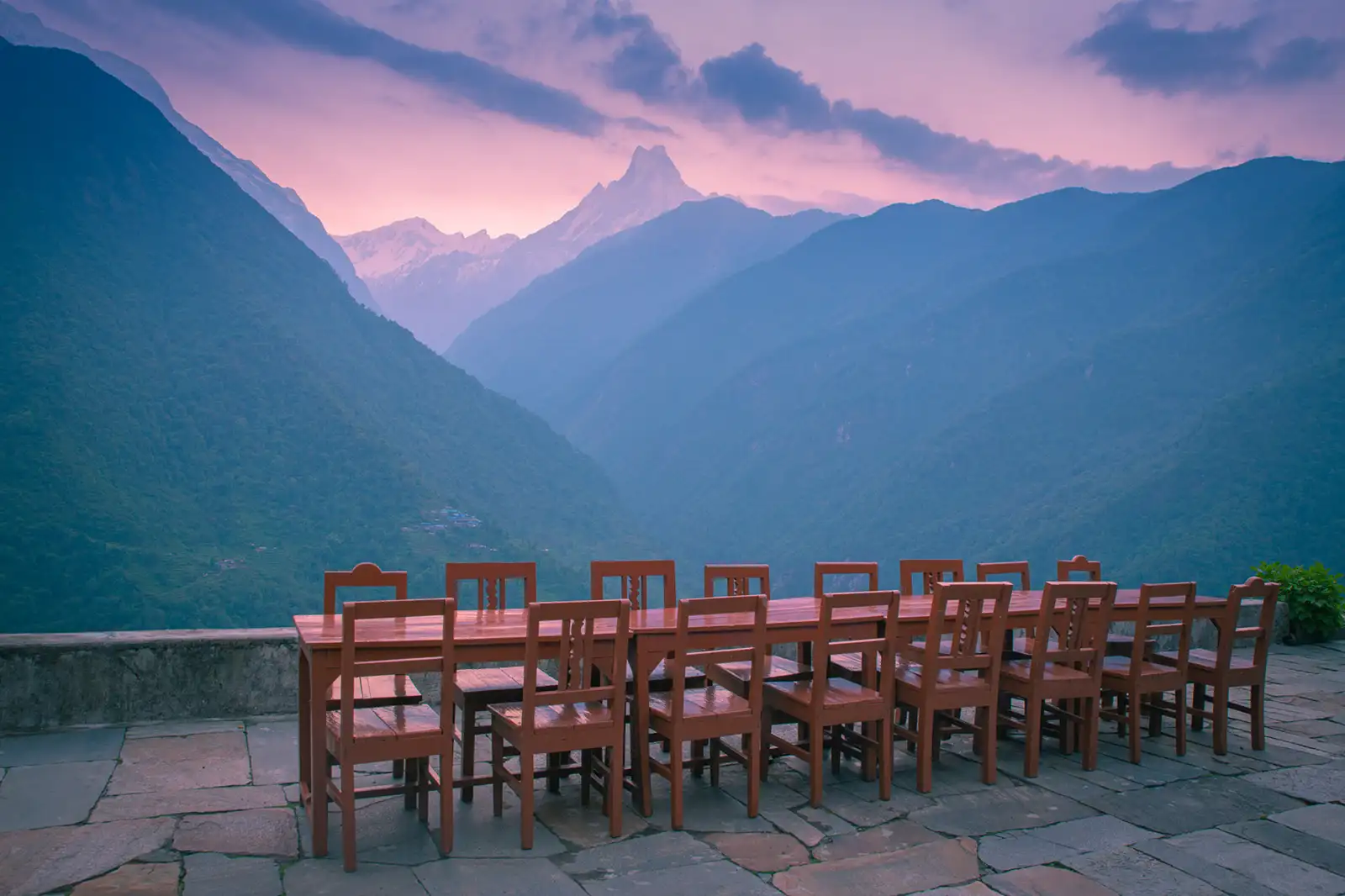
When trekkers arrive in Chhomrong, they receive a warm welcome into a vibrant Gurung village known for its traditional stone houses and friendly locals. This village is a perfect place for an overnight stay, offering a unique opportunity to experience the local lifestyle and culture.
In Chhomrong, trekkers can rest, enjoy local hospitality, and prepare for the next leg of their journey towards Singu Chuli Peak.
Accommodation: Local Lodge
Meals: Breakfast, Lunch, Dinner
Day 8: Chhomrong to Dovan (2,600m) - 5-6 Hours Trek
The trek from Chhomrong to Dovan takes adventurers through dense forests, creating an enchanting and serene atmosphere. The path, surrounded by the natural beauty of the forest, provides a refreshing change of scenery as trekkers move closer to their destination.
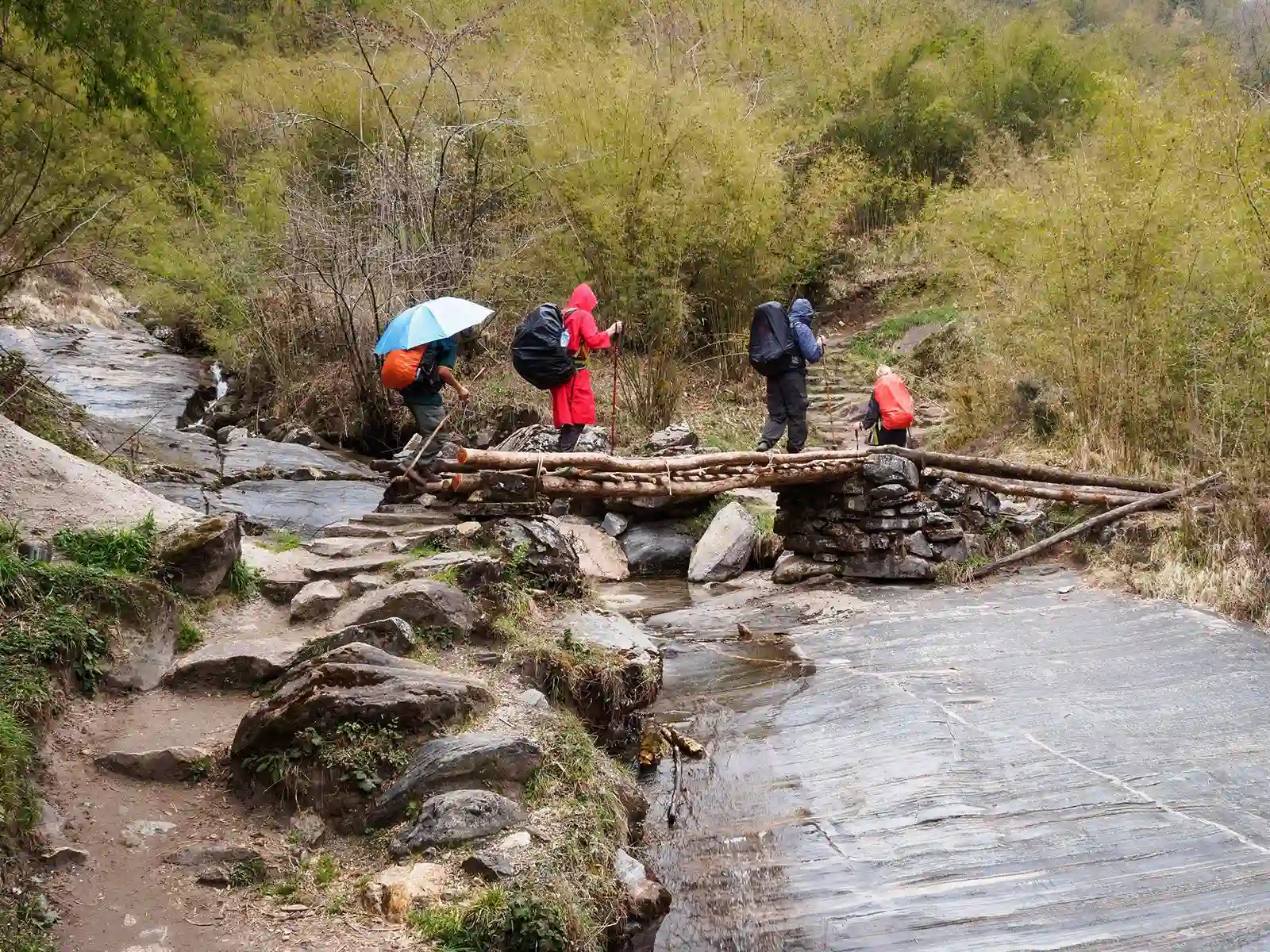
Upon reaching Dovan, trekkers find a quaint and cozy spot for their overnight stay. This small settlement, nestled within the forest, offers basic accommodations and a chance to relax amid nature.
Accommodation: Local Lodge
Meals: Breakfast, Lunch, Dinner
Day 9: Dovan to Machhapuchhre Base Camp (MBC) (3,700m) - 6-7 Hours Trek
The trek from Dovan to Machhapuchhre Base Camp (MBC) takes trekkers up through different landscapes, getting them closer to the Himalayas. They see more mountain plants and rough mountain terrain as they go higher.
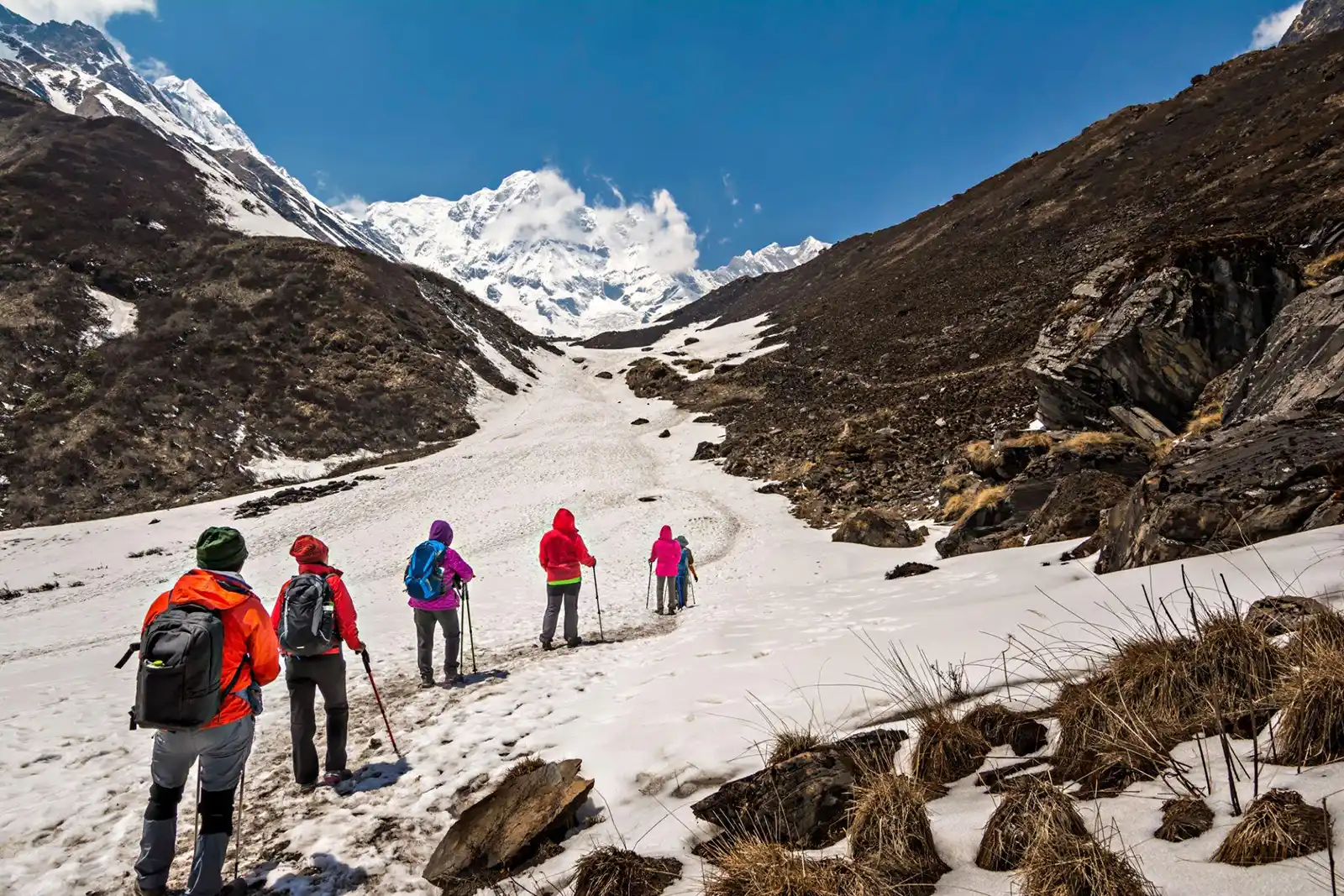
When trekkers reach Machhapuchhre Base Camp, they find themselves surrounded by incredible views of Machhapuchhre, known as the “Fishtail” mountain, and other nearby peaks. The base camp is a great location to take in the Himalayas’ breathtaking scenery.
Staying at MBC is a memorable part of the trek, filled with stunning views that show the true spirit of the Singu Chuli Peak climbing adventure.
Accommodation: Tented Camp
Meals: Breakfast, Lunch, and Dinner
Day 10: Acclimatization at MBC (3,700m) - 2-3 Hours Optional Trek
Spending a day at Machhapuchhre Base Camp for acclimatization is crucial in preparing for higher altitudes, and it’s an opportunity to explore the surrounding area through short hikes.
This day at the base camp allows for a slower pace, enabling trekkers to enjoy the magnificent views and serene environment.
Accommodation: Tented Camp
Meals: Breakfast, Lunch, and Dinner
Day 11-12: MBC to ABC (4,130m) to Singu Chuli Base Camp (4,400m)
The journey from Machhapuchhre Base Camp to Annapurna Base Camp (ABC) is an essential and beautiful part of the climb.
Climbers pass through stunning landscapes on their way to ABC, greeted with amazing views of the Annapurna Mountains.
Staying a day at this famous base camp helps climbers get used to the altitude and gives them a chance to rest, explore the area, and enjoy the magnificent scenery before moving on.
After resting at Annapurna Base Camp, the expedition heads towards Singu Chuli Base Camp.
The trek to Singu Chuli Base Camp adds excitement, preparing climbers for the upcoming climb and introducing them to the unique environment around Singu Chuli Peak.
Accommodation: Tented Camp
Meals: Breakfast, Lunch, and Dinner
Day 13-17: Singu Chuli Peak Climbing (6,501m) - Variable Climbing Hours
In the first few days of the Singu Chuli Peak climb, climbers focus on getting used to the high altitude.
They do this by going on short hikes and easy climbs near the base camp, slowly exposing themselves to higher altitudes.
It helps their bodies adjust to less oxygen and reduces the chance of getting altitude sickness, preparing them for the stricter climb.
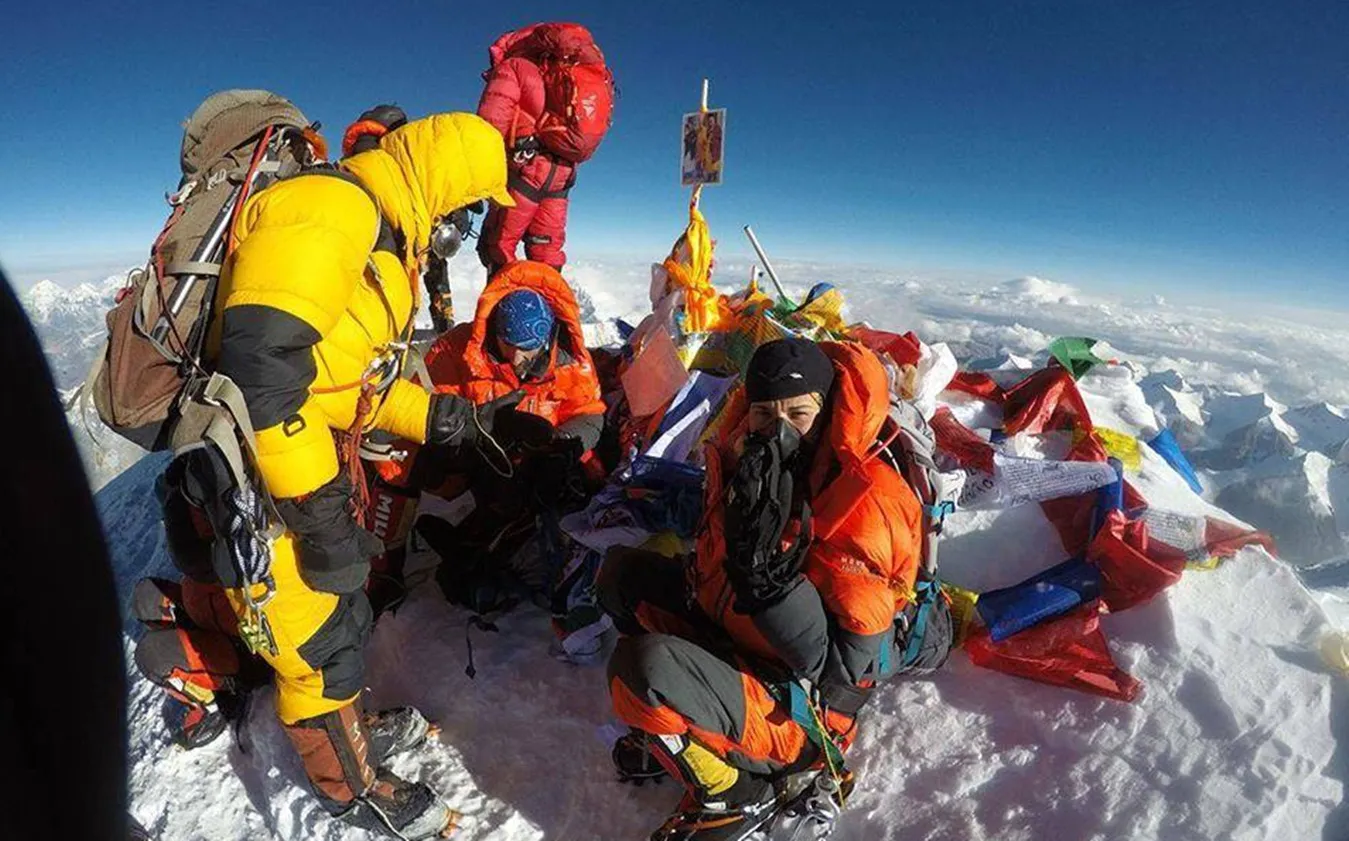
Next, the team sets the route to the summit. Experienced climbers or sherpas lead this, figuring out the safest and most effective way to the top.
They look at the landscape, the weather, and any dangers to plan the best path.
At this time, they also get all the gear and supplies ready for the climb.
The final part of the journey is the climb to the summit. Climbers start this early in the morning, often before sunrise. As they reach the summit, their resilience—both mental and physical—will be put to the test.
But reaching the summit of Singu Chuli Peak is incredibly rewarding, with stunning views of the Himalayas and an incredible feeling of achievement.
Accommodation: Tented Camp
Meals: Breakfast, Lunch, and Dinner
Day 18: Return to Annapurna Base Camp (4,130m) - 6-7 Hours Trek
After the exhilarating summit of Singu Chuli Peak, climbers begin their descent to Annapurna Base Camp.
The descent is usually quicker than the ascent but still requires careful navigation and attention to safety.
Spending the night at Annapurna Base Camp offers a well-deserved rest.
It is also a moment to celebrate the successful climb in the company of fellow trekkers, sharing stories and experiences against the backdrop of the majestic Himalayan peaks.
Accommodation: Tented Camp
Meals: Breakfast, Lunch, and Dinner
Day 19: ABC to Bamboo (2,310m) - 5-6 Hours Trek
The trek from Annapurna Base Camp back down through the Modi Khola Valley to Bamboo is a journey that unwinds along the winding river path, offering a refreshing change of scenery.
As trekkers descend, they pass through lush forests and can enjoy the serene sounds of the river and the local wildlife.
The day ends in Bamboo, a small settlement nestled in the valley.
Accommodation: Local Lodge
Meals: Breakfast, Lunch, Dinner
Day 20: Bamboo to Jhinu Danda (1,760m) - 5-6 Hours Trek
The trek to Jhinu Danda introduces trekkers to a more relaxed phase as they head towards this well-known stop famous for its natural hot springs.
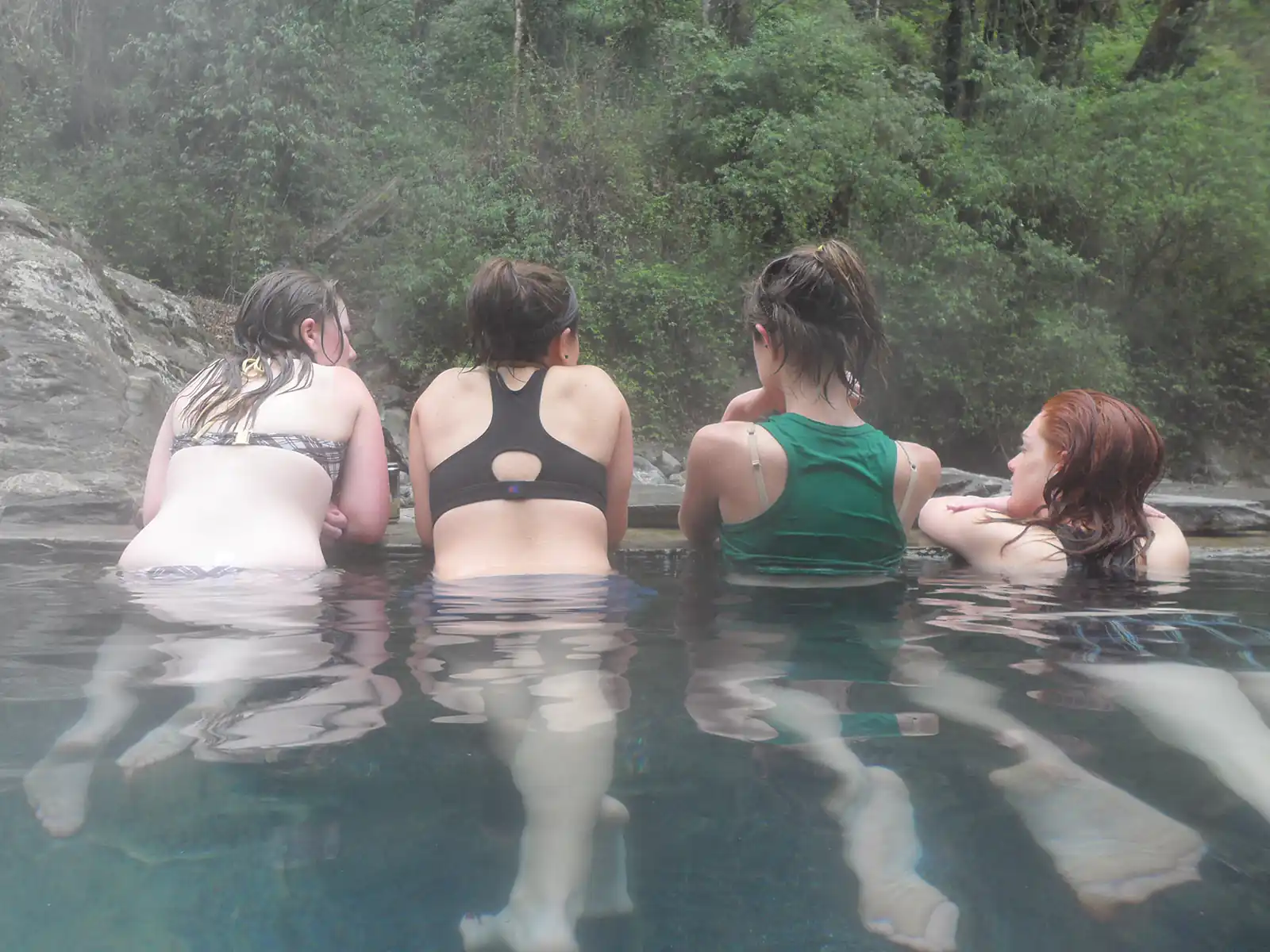
Upon arrival, trekkers can unwind and soothe their muscles in the warm, mineral-rich waters of the springs, a perfect way to relax after strenuous trekking.
Accommodation: Local Lodge
Meals: Breakfast, Lunch, Dinner
Day 21: Jhinu Danda to Nayapul to Pokhara - 5-6 Hours Trek, 1 Hour Drive
The final leg of the trek from Jhinu Danda to Nayapul marks the end of the Himalayan trek on foot.
As trekkers make their way to Nayapul, they actively reflect on the adventures and achievements of the preceding days.
Arriving in Nayapul, they transition from the peaceful mountains to the vibrant city life of Pokhara through a drive, culminating in an overnight city stay.
Pokhara welcomes trekkers with a well-earned rest, allowing them to relax, explore the city at their leisure, and soak in its lakeside beauty.
Accommodation: Hotel
Meals: Breakfast, Lunch, Dinner
Day 22: Return to Kathmandu (1,400m)
The journey from Pokhara back to Kathmandu signifies the conclusion of the Singu Chuli Peak climbing adventure.
Travelers can take a scenic drive or a short flight back to the capital city, each offering its unique perspective of Nepal’s diverse landscapes.
In Kathmandu, a farewell dinner serves as a celebratory end to the journey.
It is a moment of camaraderie and reflection, marking the successful completion of the Singu Chuli Peak climbing.
Accommodation: The Everest Hotel
Meals: Breakfast and Dinner
Day 23: Departure Day
Departing from Kathmandu marks the final chapter of the Singu Chuli Peak climbing expedition.
This moment is often bittersweet as climbers say goodbye to the city that served as the gateway to their adventure.
As climbers leave Kathmandu and head towards their next destination or back home, they carry souvenirs and a deeper appreciation for the majestic Himalayas. The warmth of Nepalese culture, and a renewed sense of adventure.
Meals: Breakfast
Customize this trip with help from our local travel specialist that matches your interests.
Includes & Excludes
What is included?
- Airport pick up and drop and transfer to hotel
- Guided sightseeing in Kathmandu Valley
- Hotel in Kathmandu, teahouses for trekking, and tented accommodation for Singu Chuli Peak Climbing
- Meals during the trekking and Singu Chuli Peak Climbing period
- All ground transportation as per our itinerary by private vehicles
- All necessary staff with experienced English-speaking climbing guide, cook, assistant climbing leader (5trekkers 1 assistant guide), and Sherpa porters
- All necessary paperwork like trekking permits and Singu Chuli Peak Climbing permit
- Down jacket, four seasonal sleeping bags, Trekking duffel bag, t-shirt, and trekking map (down jacket and sleeping bag have to return after trip completion)
- Mountaineering camping and climbing equipment high-quality equipment like North Face or Mountain Hardwar tents, mattresses, and kitchen equipment
- Travel and rescue arrangements provide
- Welcome and farewell dinner
- Exclusive Medical Kit Bag
- All government and local taxes
What is excluded?
- Nepal Visa fee and International airfare
- Accommodation and meals in Kathmandu because of early arrival, late departure, and early return from the Singu Chuli Peak Climbing
- Altitude chamber or oxygen
- Travel and rescue insurance
- Personal climbing equipment
- Personal climbing guide on your request
- Personal expenses like phone calls, laundry, bar bills, mineral/boiled water, shower, etc
- Tips for your crews
Departure Dates
We also operate Private Trips.
Good To Know
- Climbing Boots: Insulated, waterproof, and crampon-compatible boots.
- Climbing Helmet: Provides head protection from falling objects.
- Harness: Essential for safety during roped sections.
- Ice Axe: Used for balance and self-arrest on steep slopes.
- Crampons: Attach to boots for traction on icy terrain.
- Ropes: Dynamic and static ropes for various climbing purposes.
- Carabiners: Locking and non-locking carabiners for securing gear.
- Ascender and Descender Devices: Aid in ascending and descending ropes.
- Ice Screws: Anchors into ice and snow for safety.
- Prusik Loops: Assist in self-rescue and ascending ropes.
- Belay Device: Used for belaying climbers during roped sections.
- Insulated Gloves: Waterproof and insulated gloves for hand protection.
- Base Layers: Moisture-wicking and thermal clothing for layering.
- Hardshell Jacket and Pants: Waterproof and windproof outer layers.
- First Aid Kit: Includes altitude sickness medication, pain relievers, and medical supplies.
Trip Information
Best time to climb Singu Chuli Peak
Pre-Monsoon Season (April to May): The prime climbing season for Singu Chuli Peak falls during April and May. During this time, clear skies and mild temperatures stabilize the weather, creating optimal climbing conditions. Additionally, the mountain’s snow conditions are typically favorable, providing a suitable surface for climbing climbers.
One of the notable advantages of the pre-monsoon season is its excellent visibility, allowing climbers to relish panoramic views of the majestic Himalayan peaks surrounding them, enhancing the overall climbing experience.
Post-Monsoon Season (September to October): Another exceptional opportunity for Singu Chuli Peak Climbing falls within the post-monsoon period, particularly in September and October. Following the monsoon rains, the skies clear, and the weather stabilizes, creating favorable conditions for mountaineers.
During this season, the mountain’s overall conditions are typically excellent, including clear visibility and comfortable temperatures. As a result, the post-monsoon season is a popular choice among climbers aiming for a successful summit bid, as it enhances their chances of reaching the peak while enjoying unobstructed views of the stunning Himalayan landscape.
The difficulty level of Singu Chuli Peak Climbing
Technical Climbing Skills: Singu Chuli Peak Climbing demands high technical prowess from mountaineers. The ascent entails navigating steep snow slopes, icy sections, and intricate ridges, which necessitate a strong proficiency in rock and ice climbing techniques.
Climbers must be well-versed in using specialized gear and equipment suited for these challenging terrains to safely and effectively tackle the technical complexities of the climb.
High Altitude: Singu Chuli Peak’s elevation of around 6,501 meters (21,329 feet) places climbers in a high-altitude environment. Among the difficulties this altitude presents are lower oxygen levels, which might result in problems specific to altitude, like altitude sickness.
Climbers must prepare for the physiological effects of high altitude that can impact their physical performance and overall well-being. Proper acclimatization and a thorough understanding of altitude-related risks are essential to mitigate these challenges and ensure a safe peak ascent.
Physical and Mental Endurance: Singu Chuli Peak Climbing is demanding and requires high physical fitness. The ascent involves strenuous activities such as steep climbs, heavy backpacks, and long hours of trekking, all at high altitudes.
Mental endurance is vital as climbers must navigate challenging terrains, endure adverse weather conditions, and overcome mental obstacles, including fatigue and self-doubt, throughout the ascent. Developing mental and physical toughness is essential for a safe and successful ascent of Singu Chuli Peak.
Weather Variability: Weather conditions in the Himalayas are known for their rapid and unpredictable changes, adding a layer of challenge to climbing Singu Chuli Peak. Climbers must be well-prepared and adaptable as they may encounter sudden weather shifts, including unexpected snowstorms and extreme cold temperatures.
These weather challenges can significantly impact visibility, trail conditions, and overall safety during the climb. Therefore, climbers must carry appropriate gear, be vigilant about weather forecasts, and have contingency plans to navigate these challenging conditions while ascending the peak.
Climbing Permits
Climbing permits are essential for undertaking Singu Chuli Peak climbing. To obtain the necessary permits, climbers typically must coordinate with local authorities and expedition organizers. These permits include trekking and climbing permits specific to the Annapurna region.
Climbers might also need a TIMS card (Trekkers’ Information Management System). It’s crucial to have all the required permits and documents in order before starting the expedition to ensure compliance with local regulations and to access the trekking and climbing areas legally.
Insurance
Comprehensive insurance coverage is essential for Singu Chuli Peak Climbing. Climbers should secure travel insurance that includes provisions for high-altitude mountaineering and emergency evacuation coverage. This insurance provides financial security if there are mishaps, injuries, or unforeseen circumstances while on the trip.
It is essential to carefully review and understand the insurance policy’s terms, coverage limits, and procedures for making claims to ensure that climbers have adequate protection for this challenging climb.
Singu Chuli Climbing Route
Adventurers pursuing Singu Chuli Peak Climbing can choose from several routes to the summit, with the northeast face and the southwest route being the most popular. These paths converge at Tent Peak (Tharpu Chuli), leading adventurers through the renowned trails to Machhapuchhre and Annapurna base camps. The adventure to Singu Chuli’s base camp kicks off with a quick drive from the city of Pokhara to Nayapul, marking the beginning of the expedition.
The trek immerses climbers in the rich cultural and traditional fabric of villages such as Ghandruk and Chomrong. Those starting on the Singu Chuli Peak Climbing adventure will experience local lifestyles up close, admire the picturesque terraced farms of millet and rice, and take in the stunning views of the snow-capped Annapurna South, Machhapuchhre, and Hinchuli, making their climb a journey filled with memorable vistas and cultural discoveries.
Local Guide and Porter Services
Engaging local guide and porter services during a Singu Chuli Peak climbing expedition is highly recommended. Local guides have extensive expertise covering topography, meteorological trends, and cultural nuances. They provide navigation assistance, ensure safety, and offer guidance on acclimatization.
Porters, conversely, help carry gear, easing the physical burden on climbers. Their support lets climbers focus on the ascent, making the expedition more manageable and enjoyable. Both local guides and porters contribute significantly to the success and safety of the climbing journey.
Frequently Asked Questions
The ‘Fishtail Pyramid,’ also called Singu Chuli Peak, is located in Nepal’s Annapurna region and rises to a height of about 6,501 meters (21,329 feet). This elevation makes it a challenging climb.
The finest seasons to climb are from April to May, before the monsoon, and from September to October after it ends. The weather is usually stable during these hours, with clear skies and pleasant temperatures.
Since the snow conditions are often favorable for climbing, it’s the ideal time to attempt to reach the summit. Excellent visibility during the pre-monsoon season allows climbers to take in expansive views of the Himalayan peaks.
Generally, climbers require a Trekkers’ Information Management System (TIMS) card and an Annapurna Conservation Area Permit (ACAP).
Additionally, if you’re planning a summit attempt, you may require specific climbing permits. These permits help support conservation efforts and ensure your safety during the climb.
Yes, prior climbing experience is crucial for Singu Chuli Peak. This ascent involves steep snow slopes, ice sections, and technical ridges, demanding proficiency in rock and ice-climbing techniques. Climbers should have experience in these skills to safely navigate the mountain’s challenges.
Climbing Singu Chuli Peak is considered highly challenging due to its technical demands. The steep snow slopes, ice sections, and technical ridges require advanced climbing skills. Climbers must prepare for a physically and mentally demanding ascent.
Hiring local guides and porters for your safety and support during the expedition is highly recommended.
These experienced individuals are familiar with the terrain and can assist with route finding, logistics, and carrying equipment. You can hire them through reputable trekking agencies in Nepal.
To be ready for the climb, climbers should be in peak physical shape and receive training tailored to their altitude. Exercises that improve cardiovascular fitness, strength, and endurance are crucial. Additionally, climbers should practice using their climbing gear to ensure proficiency.
High-altitude climbing presents several risks, including altitude sickness, extreme cold, avalanches, and crevasses. Altitude sickness can be particularly concerning due to reduced oxygen levels at higher elevations. Climbers must prioritize acclimatization and adhere to safety protocols.
Altitude sickness is a significant concern at high elevations. Acclimatization days are incorporated into the expedition as climbers progressively reach more significant elevations to enable their bodies to adjust to the lower oxygen concentrations.
Medications, such as acetazolamide (Diamox), may alleviate symptoms. In severe cases, descending to lower altitudes is the best action.
There are emergency evacuation options in case of accidents or severe altitude sickness. Helicopter rescue services are available in Nepal, and climbers should have insurance covering evacuation. Communicating health concerns or emergencies to your guides and support team is essential.